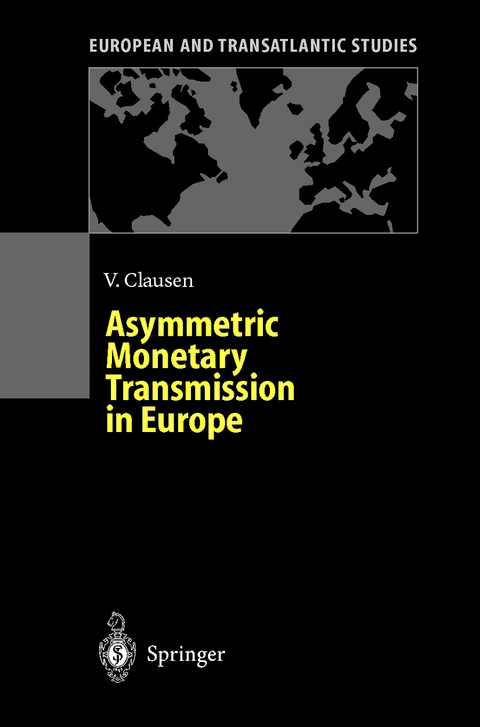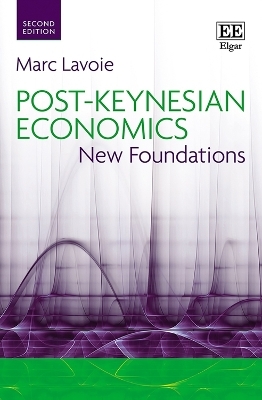
Asymmetric Monetary Transmission in Europe
Springer Berlin (Verlag)
978-3-642-64029-2 (ISBN)
1 Introduction.- 2 Sources of Asymmetric Monetary Transmission in Europe.- 2.1 Classification of Asymmetries.- 2.2 Asymmetries in the Structure of Output.- 2.3 Asymmetries in Financial Structure.- 2.4 Asymmetries in Openness.- 2.5 Asymmetries in Wage-Price Mechanisms.- 2.6 Implications of Partial Asymmetries.- 3 Financial Structure and Asymmetric Monetary Transmission: Implications of a Differential Role of Asset Markets.- 3.1 Introduction.- 3.2 The Model.- 3.3 Effects of Monetary Policy.- 3.4 Implications for the ECB.- 3.5 Appendix: Analytical Solution.- 4 Financial Structure and Asymmetric Monetary Transmission: Implications of a Differential Interest Elasticity of Aggregate Demand.- 4.1 Introduction.- 4.2 The Model.- 4.3 Effects of Monetary Policy.- 4.4 Implications for the ECB.- 4.5 Appendix: Analytical Solution.- 5 Financial Structure, Asymmetric National Money Demand Functions and the Stability of European Money Demand.- 5.1 Introduction.- 5.2 Alternative Concepts of Money Demand Stability.- 5.3 Empirical Evidence.- 5.4 Implications for the ECB.- 5.5 Appendix.- 6 Asymmetric Degrees of Openness and Monetary Transmission in Europe.- 6.1 Introduction.- 6.2 The Model.- 6.3 Effects of Monetary Policy.- 6.4 Effects of Disturbances in the Rest of the World.- 6.5 Implications for the ECB.- 7 Asymmetric Wage-Price Mechanisms and Monetary Transmission in Europe.- 7.1 Introduction.- 7.2 The Model.- 7.3 Effects of Monetary Policy.- 7.4 Implications for the ECB.- 8 Empirical Evidence on Asymmetric Monetary Transmission in Europe.- 8.1 Large National Central Bank Models.- 8.2 Structural Multi-Country Models.- 8.3 Small Vector Autoregressive Models.- 8.4 Small Structural Models.- 8.5 Implications for the ECB.- 9 Monetary Policy in an Era of Structural Change.- 9.1 Structural Changes in Financial Markets.- 9.2 Structural Changes in Goods Markets.- 9.3 Structural Changes in Labor Markets.- 9.4 Implications for the ECB.- List of Figures.- List of Tables.
| Erscheint lt. Verlag | 18.9.2011 |
|---|---|
| Reihe/Serie | European and Transatlantic Studies |
| Zusatzinfo | X, 207 p. |
| Verlagsort | Berlin |
| Sprache | englisch |
| Maße | 155 x 235 mm |
| Gewicht | 340 g |
| Themenwelt | Wirtschaft ► Volkswirtschaftslehre ► Finanzwissenschaft |
| Wirtschaft ► Volkswirtschaftslehre ► Makroökonomie | |
| Schlagworte | Business Cycle • Econometrics • Europäische Währungsunion • Europäische Währungsunion / Euroland • european central bank • European Monetary Union (EU) • Financial Markets • Geldpolitik • Konjunktur • Labor Market • Macroeconomics • monetary policy • Monetary Transmission • Monetary Union • Transmissionsmechanismus |
| ISBN-10 | 3-642-64029-X / 364264029X |
| ISBN-13 | 978-3-642-64029-2 / 9783642640292 |
| Zustand | Neuware |
| Haben Sie eine Frage zum Produkt? |
aus dem Bereich


